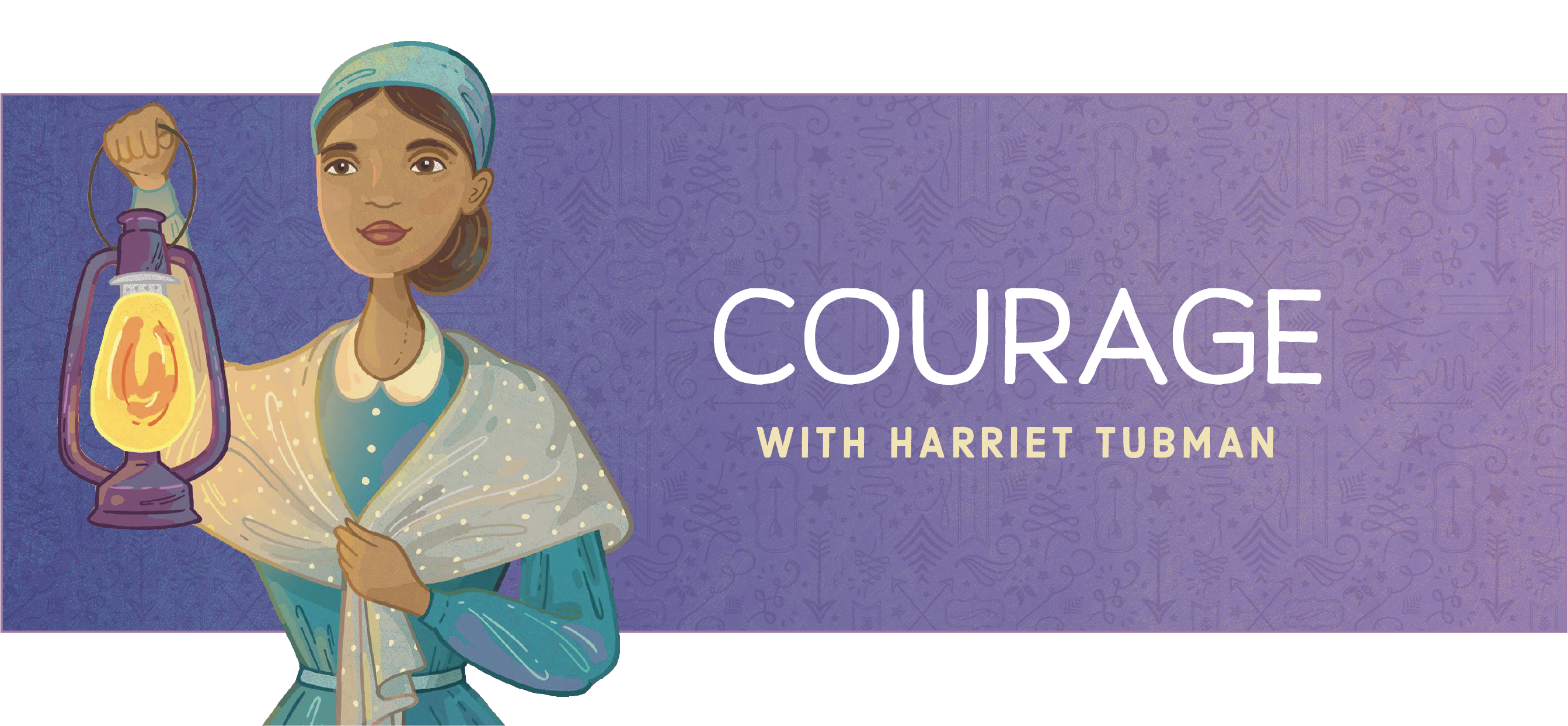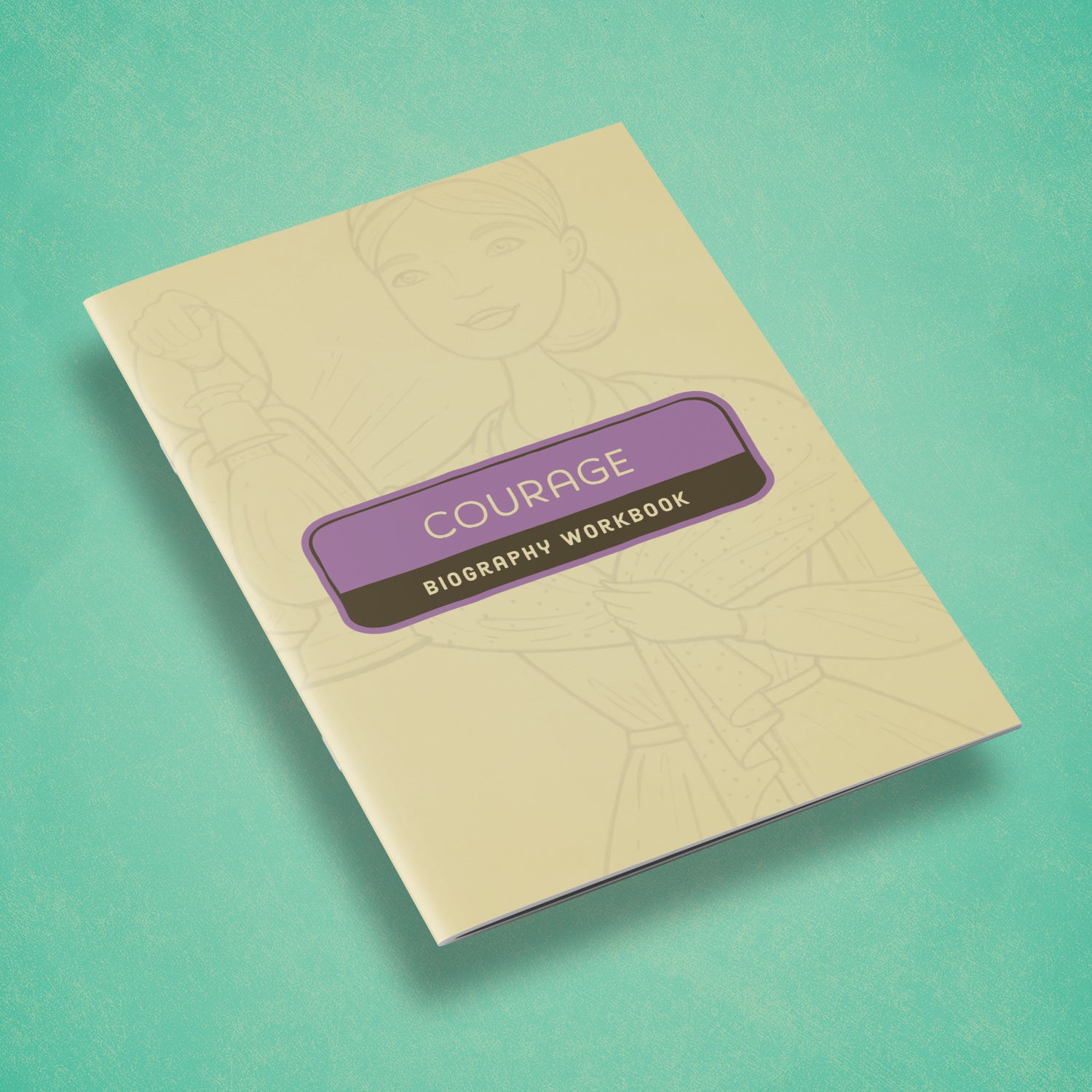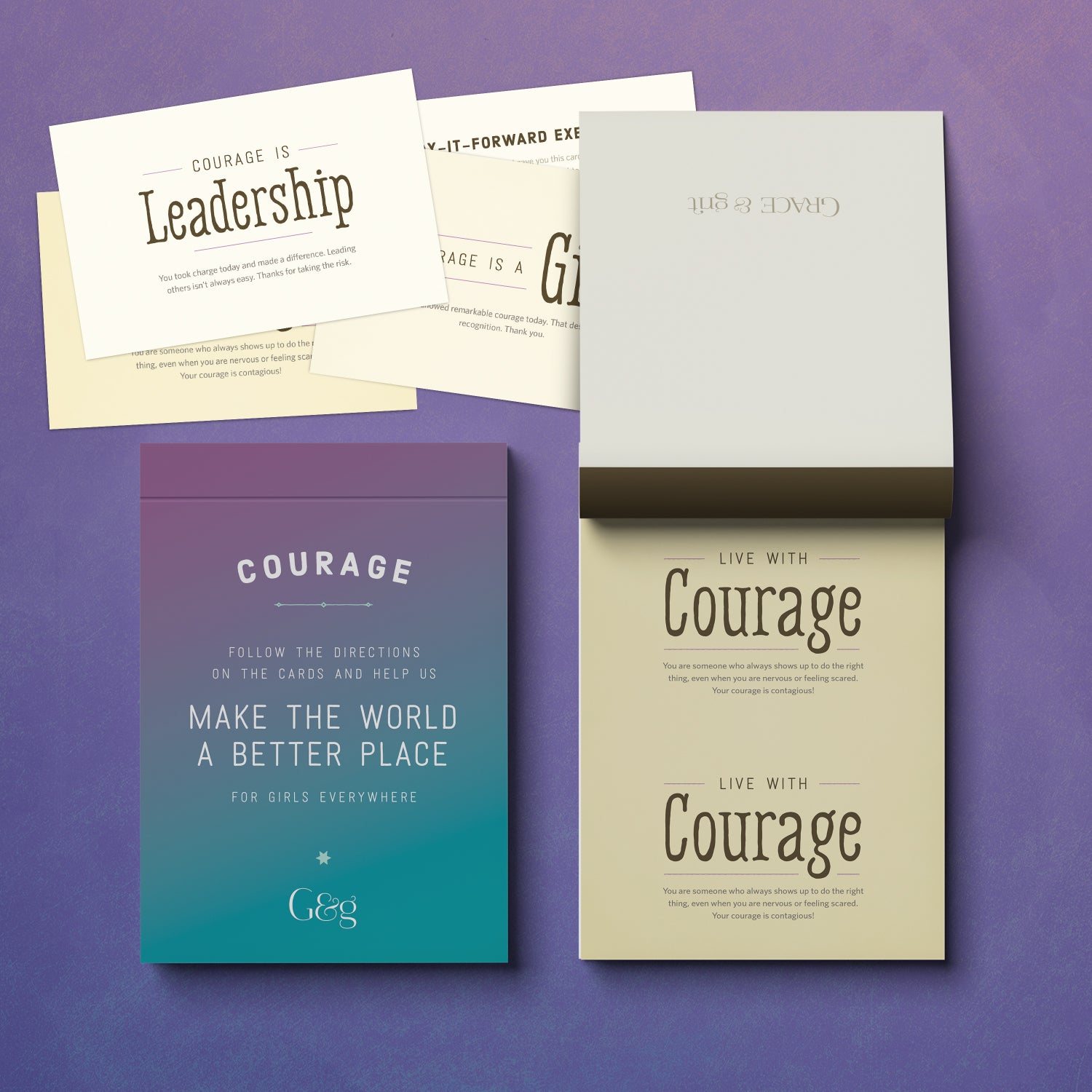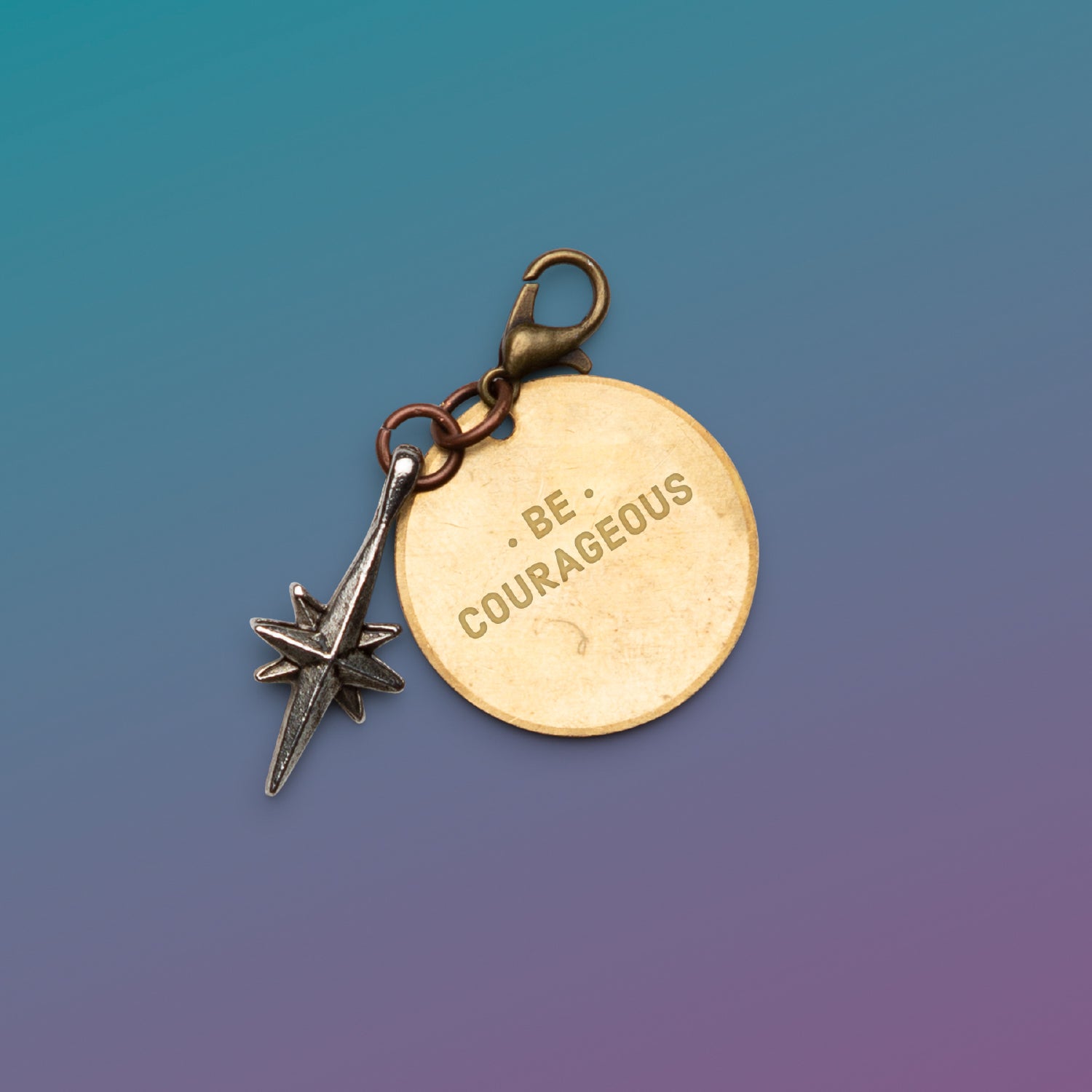Courage means showing up for yourself or others despite feeling fear, doubt or vulnerability. It can be hard to do sometimes. However, it is an important lesson to learn early on in life. This lesson gives a real-life example of a woman who stepped into her courage and freed herself and others. It helps girls understand the importance of bravery and how to incorporate the character trait into their lives and relationships.

Section One
Preparatory Reading
INTRODUCTION FROM HEATHER STARK: WHY HARRIET TUBMAN?
Harriet Tubman is the enslaved woman most of us remember learning about in childhood. I remember reading about her in the fourth grade in “Harriet Tubman and The Underground Railroad.” I remember the description of her escape and her journey to freedom. I recall reading how the only thing she had to eat was “waterlogged bread.” I reread that sentence several times, and as a 10-year-old girl, I remember tearing up in fear because I didn’t want her to get caught. I wanted her to make it to safety, which to my child self meant she needed to become small and hide forever.
But Harriet didn’t hide nor did she stay small. In fact, she kept going back into danger to free more enslaved people, risking her life for the lives of others again and again. The story of her life is one long walk filled with many empowerment opportunities for girls to learn about. Her story has everything to offer today’s girls. Every lesson they need to learn can be found in Harriet’s story. It’s almost doing her a disservice by choosing to highlight only her courage.
Now let me offer a disclaimer here by saying the following thoughts are my theory on Harriet Tubman: After researching her, I have come to the conclusion that Harriet was all-encompassing: a confident leader, a clear communicator, a servant and, above all, brave beyond measure.
There was something innate in Harriet that made her a valiant servant. Perhaps that comes when you are born into a world where you are not seen as a person. Maybe that situation makes you empathetic to others, so you strive to make sure they know their value. After all, Harriet freed at least 70 enslaved people before the Civil War and another 700 during it! I imagine every time she started back into slavery territory, she must have been scared. Perhaps she wondered if this would be the time she would be caught. But she faced those fears with determination. She believed in her mission of freeing others from oppression.
Think about this: Following the North Star, Harriet traveled with other fugitive enslaved people at night; she had to trust that her instincts would tell her which way to go. How many of us really understand what it means to “follow the North Star?” She had to believe in herself and trust in her ability to lead the freedom-seekers north. Not only that, but she had to be able to calm herself and others if emotions ran high, if there was a tense situation or if disagreements emerged while they crept through forests, boarded ships and trains and walked along open roads. She was the leader on that long journey to freedom.
Lastly, her communication as she led her group had to be precise. She would have to be quiet when talking with them, and her actions had to be swift and clear. There could be no confusion while trying to escape from slavery. To free that many people from oppression, you had to know what to say and when to say it: a quality that only the wisest seem to grasp.
Furthermore, Harriet became a spy during the Civil War and a voice for women in the arena of equal rights. She was invited to speak at conventions held for women’s suffrage. No, she didn’t stay small and safe. She just didn’t stop pushing at the limits society tried to use to cage her in. She fought hard to be empowered and to empower others.
Valuing Harriet Tubman’s story gives our leaders of tomorrow a head start to developing a well-rounded personality, an advantage in gaining empowerment. Harriet was the real deal—and it all started with a long walk to freedom, leaving us with an even longer list of reasons to learn about her.
THE JOURNEY OF HARRIET TUBMAN’S LIFE
Harriet’s life is well-documented. Her story is so inspiring that it seems as though researchers, journalists and historians want every detail recorded to clearly understand Harriet’s life and her motivations. She was more than a slave, more than an activist; she was a life lived in full view—a powerful lesson in courage and in dedicating oneself to serving others.
1820-22
Harriet Tubman was born during this time to enslaved parents. Her birth name was Araminta “Minty” Ross.
1833
An accident left Harriet with seizures and vivid dreams.
1849
Harriets decided to escape to freedom via the Underground Railroad.
1850
Harriet made her first journey back to the South to free enslaved people.
1851
Harriet moved the Underground Railroad’s base to the city of St. Catharines in Ontario, Canada, where it would remain for the next six years.
1860
Harriet’s last journey south was an effort to emancipate her sister. Upon arriving and learning her sister had died, Harriet instead took another family to freedom.
1861
During the Civil War, Harriet worked as a cook and a nurse in the South while spying and recruiting other enslaved people to fight for the North.
1863
Harriet was the first woman to lead an armed military attack, freeing 700 enslaved people before the Emancipation Proclamation later that year.
1868
Harriet delivered speeches for the Woman Suffrage Movement. That same year, she underwent brain surgery without anesthesia.
1903
Harriet donated her property as a home for "aged and indigent colored people.”
1913
Harriet died at age 93 from pneumonia. She was buried at Fort Hill Cemetery in New York with full military honors.
There is not one ounce of Harriet’s story that isn’t dripping with courage and activism for others. She was tough and loving. Courageous and confident. Grace and grit.
CHARACTER TRAIT: COURAGE
Courage requires confidence, grit and maybe even a little sass. It doesn’t happen in the absence of fear but, rather, in spite of it. Courage is the shield allowing one to face her fears head-on, whatever they may be. Courage is important to today’s girls because it empowers them to be their authentic selves. There always is pressure to conform to others’ views, and courage is the road that bypasses peer pressure.
Growing up is full of fearful situations: making mistakes in front of others, not belonging, being ridiculed. Courage equips girls to stand up to bullying behaviors, participate in extracurricular activities and become leaders in school. Courage is the tool a girl will use when times are unstable at home, when she learns to drive, advances from elementary school to middle school, graduates high school and steps into adulthood. The list goes on and on. While parents, teachers and important role models in a girl’s life can’t remove those fears, they can help girls become courageous in their pursuit of an empowered life. Courage is the push all girls need to keep moving forward in life.
While Harriet Tubman’s courage was loud, it is vital for girls to remember that small acts of courage are just as important as the big ones. Trying out for the school musical when you are nervous or sharing opinions you know to be different from others’ views may not be the same thing as risking your life to emancipate others, but these things still require courage. These small acts are important because they allow girls to empower themselves—and, in the process, to empower other girls by letting them know it is okay to stand up for a belief, speak out or reach out to help someone in need.
Courage is self-fulfilling empowerment. When a girl is courageous in her life, she starts to understand that she is in charge and she must own her life and her choices. This is an emotional-development milestone and an act of maturity—an important lesson that every girl must learn as she grows from childhood to teen years to adulthood.
LESSON CONTENTS
Below are descriptions of each item we offer as part of the Courage Theme. Depending on your purchase, some of these may not be applicable.
- Illustrated Portrait
- Our portrait gives life to each of our sets. Harriet's illustration epitomizes the theme of "light versus dark." She is dressed in a calming blue, her face is relaxed and she holds a lantern. One can almost imagine her appearing out of the trees, revealing her presence to the enslaved, whom she will lead to freedom. Her calm demeanor gives them strength during the harrowing journey.
- Activity Booklet
- The Activity Booklet highlights the themes of Harriet Tubman's life. It gives an overview of her journey into courage and the legacy she left behind. The booklet includes six thought-provoking activities that guide the readers to apply the lessons of Harriet's life to their own. Girls will understand what courage looks, sounds and feels like. More importantly, they will understand how to be their own best advocate.
- Biography
- While the Activity Booklet highlights Harriet's story, the Biography gives a more in-depth telling of her life. The reader will learn about Harriet's family, her traumatic childhood and her harrowing escape to freedom. The reader will also see how she became instrumental in the fight to end slavery and gender equality. The Biography contains personal stories and quotes that reinforce Harriet's advocacy and courageous spirit.
- Biography Workbook
- The Biography Workbook allows the reader to dive into the lessons Harriet's legacy teaches and apply them to their life. We took the same thought-provoking activities from the Activity Booklet and made them into a companion guide for the Biography. After completing the activities, girls will understand what courage looks, sounds and feels like. More importantly, they will understand how to be their own best advocate.
- Timeline Poster
- The Timeline Poster is a quick introduction to the life of Harriet Tubman. One look at it, and the reader can easily spot the milestones in Harriet's life that impacted her, the adversity she encountered and how she navigated herself and others through it. From birth to death, girls can trace Harriet's path and understand how her accomplishments changed the course of history.
- Play-It-Forward Cards
- Using the Play-It-Forward Cards allows your girls to generalize the lessons they have learned about the courageous Harriet Tubman. By following the directions on the cards, they will acknowledge those instances where they see Harriet's spirit in themselves and others in their community.The Play-It-Forward Cards encourage girls to support one another by building and recognizing courage and advocacy in others.
- Accessory
- The Accessory is a gift that reminds girls of Harriet's determination to find a way to freedom. The lantern necklace reminds girls that light always conquers darkness. It doesn't pause or act timid; it shines brightly for all to see. When it is time to dispel the darkness—to find the courage to accomplish something—girls need to let their lights shine.
- Charm
- The charm is a reminder of Harriet Tubman's legacy. It symbolizes her courage while escaping slavery. The G&G Charm is a round disc that reads "Be Courageous" with a North Star attached. It is a simple reminder to girls to keep reaching for their dreams and that courage is on the other side of fear.









